Clotted cream, known also as Devonshire or Cornish cream is a popular British cream tea or afternoon tea condiment served with homemade scones and strawberry jam.
Making traditional clotted cream requires a very specific cream, cooked at a low temperature for a long time.
This recipe for homemade clotted cream will teach you two methods to make it quick, easy and luxuriously smooth with any type of high fat cream without waiting for hours or ending up with a load of whey.
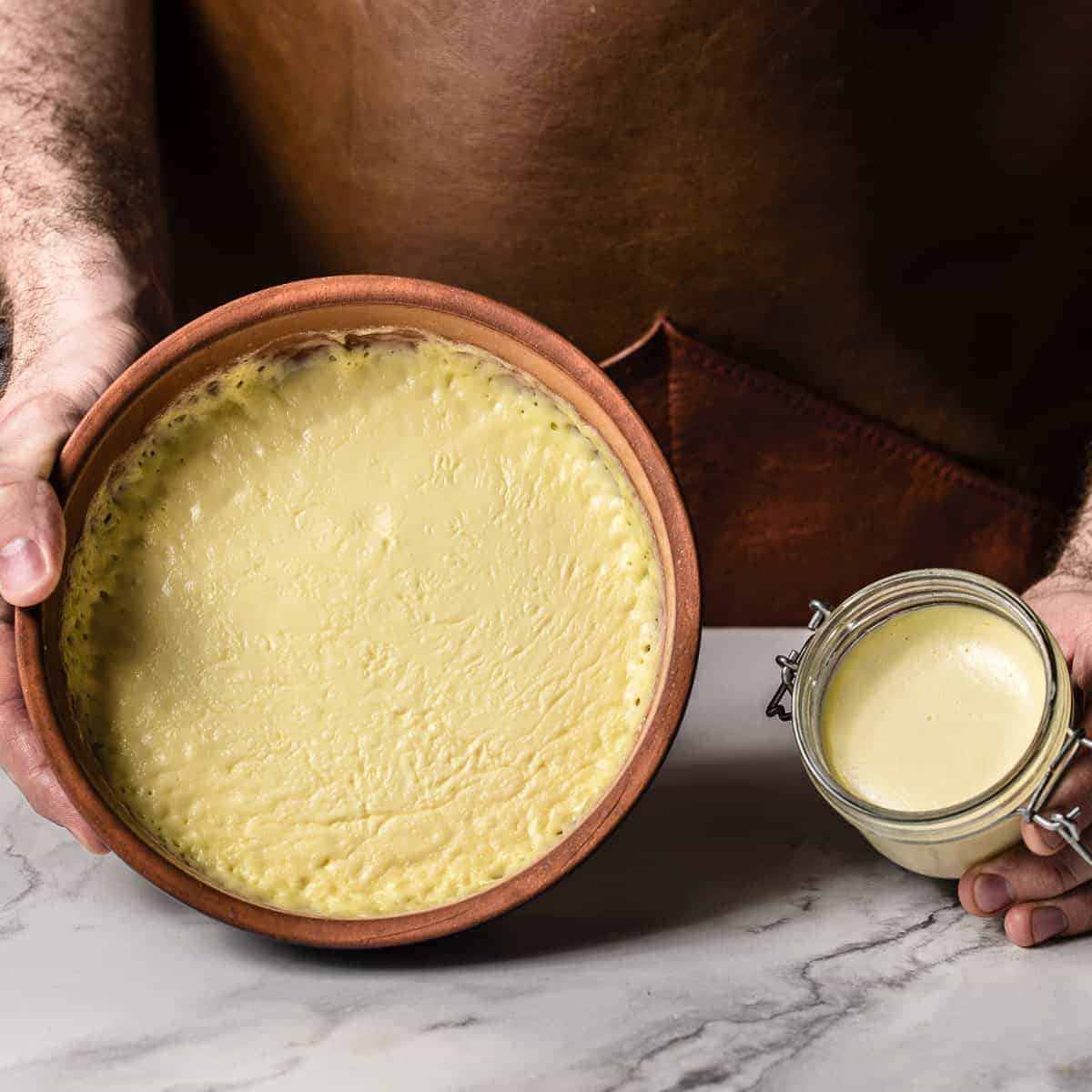
Jump to:
What is it?
Clotted cream is neither butter nor whipped cream but rather a thick spreadable smooth cream.
It traditionally comes from the South of England where 55-60% fat heavy cream from Jersey or Guernsey cows are "baked" at 80°C or 176°F for 12 hours or until the cream clots.
It usually has skin on top, formed when some of the fats separate from the cream and settle on top.
Underneath this layer lies a deliciously rich and creamy spread that goes exceptionally well with homemade scones, pumpkin bread or apple cake.
What does it taste like
If done correctly it should have a rich slightly sweet nutty, buttery caramel taste.
The texture is thick yet velvety smooth and luxurious.
The creamy flavour is much more intense than simply whipped cream or other unflavored dairy products.
Best cream to use
Unless you can get your hands on real Jersey or Guernsey cream you will most likely be using one of the following:
- Heavy cream - 36-40% fat content.
- Whipping cream - 30-36% fat content.
- UHT cream - 33% fat content.
For this recipe, I used UHT(ultra-high pasteurised) cream to demonstrate that it is possible and the results extremely delicious.
Stovetop instructions
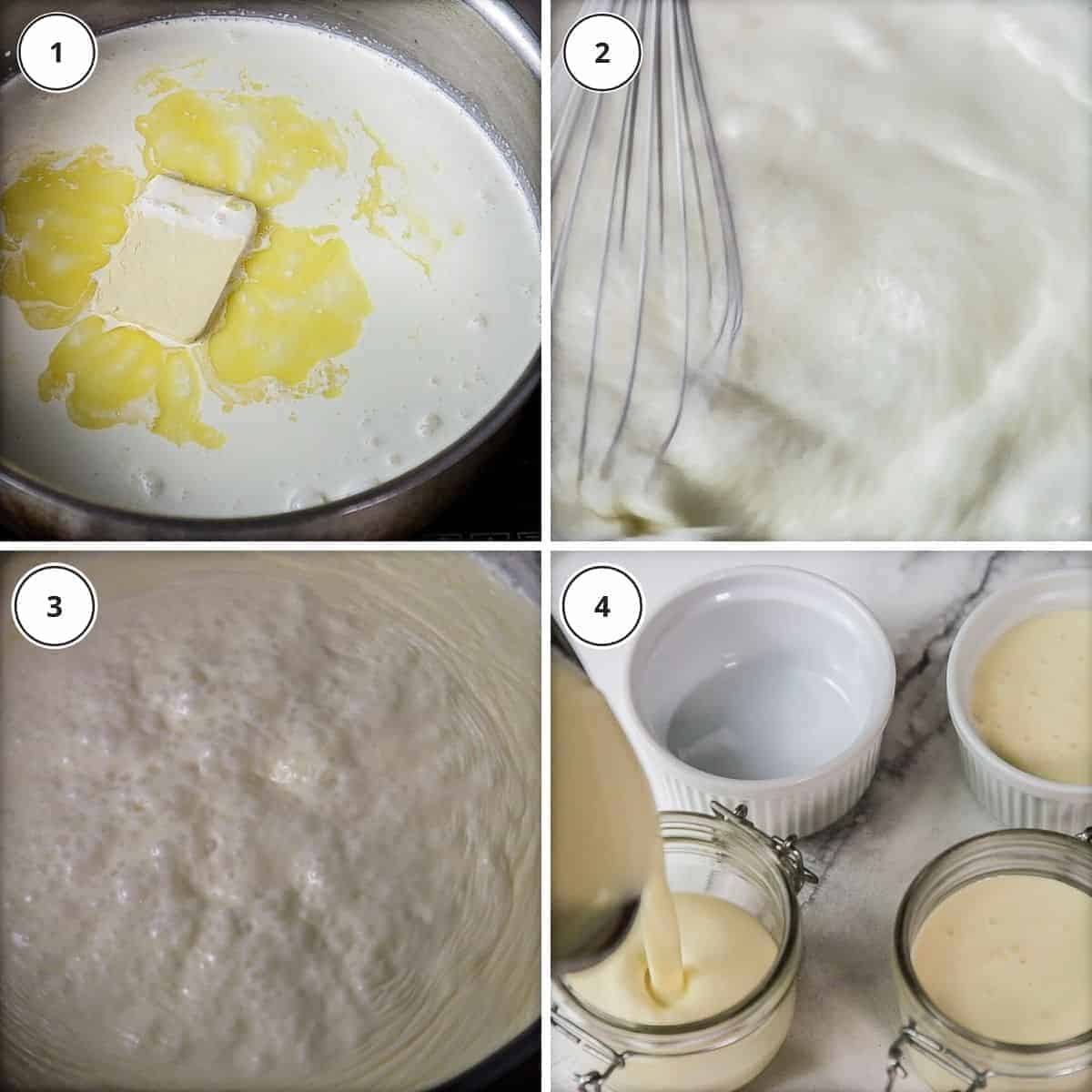
- Add cream and butter to a pan.
- Bring to a simmer while whisking.
- Continue whisking and reduce the cream by half.
- Pour a little bit on a cold plate and place it into the freezer to check that it sets. If it needs to reduce a bit more then do that.
- Once ready pour into storage jars and place into the fridge until completely chilled and set.
Microwave instructions
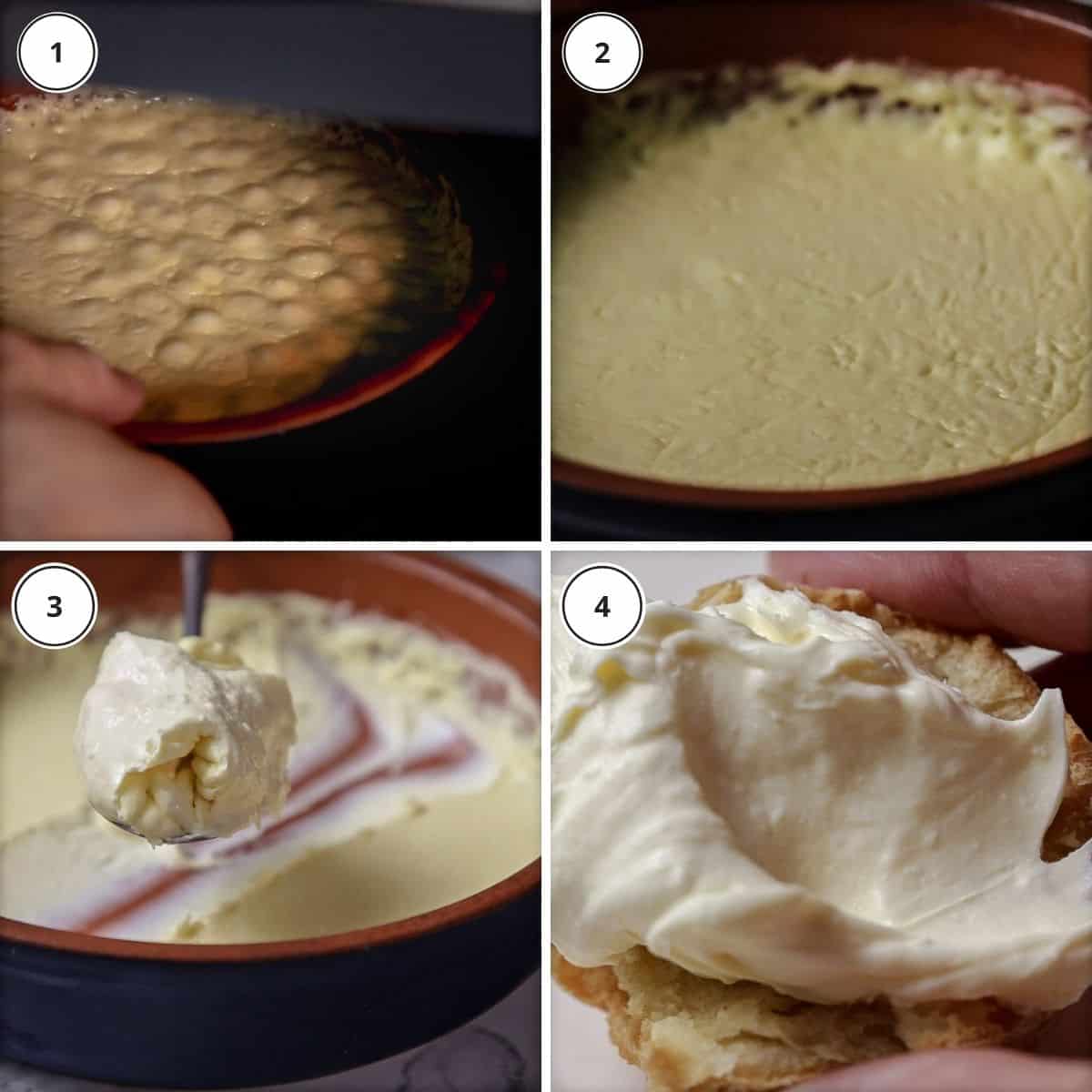
- Place the cream without any butter into a shallow microwave dish about halfway filled.
- Microwave at 5 minute intervals checking the progress and making sure the cream doesn't spillover.
- After 15 minutes(3 x 5 minute intervals) check to see if the clotted cream sets by placing a bit onto a small dish into the freezer for 5 minutes.
- Once ready simply chill in the fridge until completely set before serving.
Video
Other cooking options
If you have the time to wait or need to do this while you go do something else then use one of these methods.
I have to warn you though. There will only be a thin layer of clotted cream and a lot of milky whey leftover. Which of course you could use in something else.
Yet, if you want the traditional method with untraditional ingredients then go ahead.
- Slow cooker - Fill your cooker ¼ with water. Set your cooker to low. Place a dish filled with cream into the water. Cook for 12 hours. Set in the fridge before scooping off the clotted cream.
- Oven - Turn your oven to 80°C or 176°F. Fill a shallow dish ¾ way up with cream. Bake for 12 hours and chill completely in the fridge before harvesting your clotted cream from the top.
Tips for success
- Always use high-fat cream. 33% minimum.
- Take care not to burn the cream by whisking frequently and microwaving in bursts until done.
- Allow your clotted cream to set in the fridge before serving.
- Do not throw out the skin that forms on top of the cream. It's delicious and should be eaten with the rest of the cream.
Variations
Clotted cream can be flavoured if you want. It's especially delicious with seasonal additions like spice over Christmas or a little bit of vanilla in summer.
- Spices - cinnamon, nutmeg.
- Booze - brandy, whiskey, rum, Cointreau, sauterne.
- Flavourings - cocoa, vanilla, citrus zest, truffle.
My favourite combination for sweet preparations - Cinnamon, Cointreau and vanilla.
My favourite combination for savoury preparations - Truffle and sauternes.
How to use it
Sweet preparations
- Ice cream - Replace one-quarter of the cream with clotted cream when making vanilla or any other ice cream.
- Topping for desserts - Classic British desserts like treacle tart, sticky toffee pudding and cherry tart is decadent and extra delicious served with a dollop of clotted cream.
- Afternoon tea - Either Devonshire or Cornish tea. Your choice. Clotted cream is a must for freshly baked scones. Whether you put the cream or the jam first.
Savoury preparations
- Creamy sauces and soups - Beef stroganoff or a creamy leek and potato soup taste extra rich and creamy when you stir in a dollop just before serving.
- Pasta - Fresh homemade pasta with clotted cream and a generous grating of Parmesan and freshly cracked black pepper is the perfect cosy lunch or quick dinner.
- Bruschetta - Instead of using ricotta or mozzarella spread a bit of clotted cream on toasted sourdough bread topped with semi-dried cherry tomatoes and fresh basil.
Frequently asked questions
Not recommended because the texture becomes grainy when defrosted. However, it can be frozen, thawed and used in recipes where it would get heated up. Like soups or baking.
Store airtight in sealable containers or jars in the fridge.
Will keep well for up to 6 days.
Useful equipment
Related recipes
This site contains affiliate links. I may earn a tiny commission on qualifying purchases at no extra cost to you. By bookmarking these links you help support the upkeep of this site.
If you found this post helpful or have learned something, comment, subscribe, and follow me on social platforms for more tasty recipes.
Recipe
Homemade Clotted Cream
Ingredients
For the stovetop method
- 1 Litre (4 ¼ cups) cream - Heavy or whipping cream (note 1)
- 50 grams (3 ½ tablespoon) butter - note 2
For the microwave method
- 1 Litre (4 ¼ cups) cream - Heavy or whipping cream (note 1)
Instructions
For the stovetop method
- Add cream and butter to a pan.
- Bring to a simmer while whisking. Continue whisking and reduce the cream by half.
- Pour a little bit on a cold plate and place into the freezer to check that it sets. If if needs to reduce a bit more then do that.
- Once ready pour into storage jars and place into the fridge until completely chilled and set.
For the microwave method
- Place the cream without any butter into a shallow microwave dish about halfway filled.
- Microwave on 5 minute intervals checking the progress and making sure the cream don't spill over.
- After 15 minutes(3 x 5 minute intervals) check to see if the clotted cream sets by placing a bit onto a small dish into the freezer for 5 minutes.
- Once ready simply chill in the fridge until completely set before serving.
Video
Notes
- Do not use cream with a fat percentage less than 33%. The higher the better.
- Butter adds butteriness and extra flavour. It works great for the stovetop method as you can whisk and emulsify often. You could leave the butter out if you want. Doing this in a microwave is difficult so I left it out of the microwave method to avoid a grainy texture.
- Make sure to cool the clotted cream completely before serving.
- It does not freeze well as the texture becomes grainy once defrosted. However, it can be frozen and then used in other preparations like soup, ice cream bases or for baking. Anywhere the cream will get heated and melted again.
- Slow cooker - Fill your cooker ¼ with water. Set your cooker to low. Place a dish filled with cream into the water. Cook for 12 hours. Set in the fridge before scooping off the clotted cream.
- Oven - Turn your oven to 80°C or 176°F. Fill a shallow dish ¾ way up with cream. Bake for 12 hours and chill completely in the fridge before harvesting your clotted cream from the top.

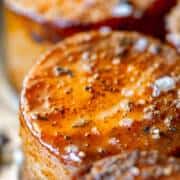
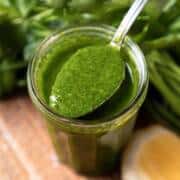

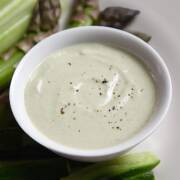
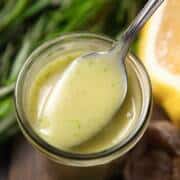
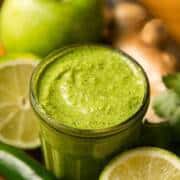
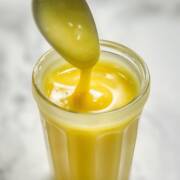

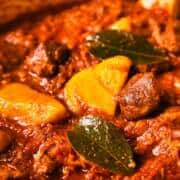
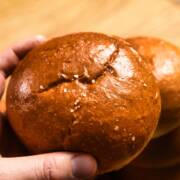
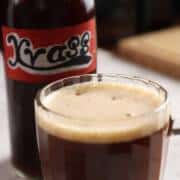
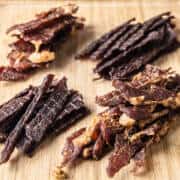
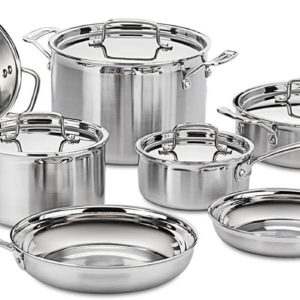
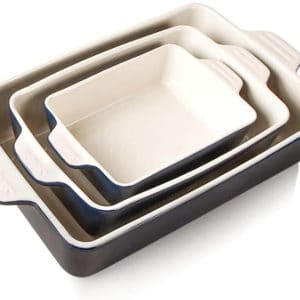
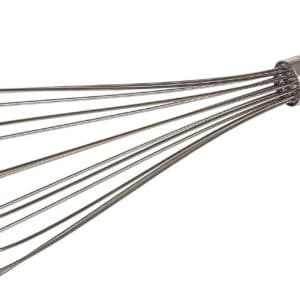
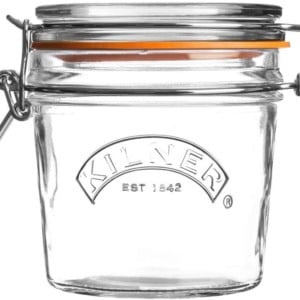
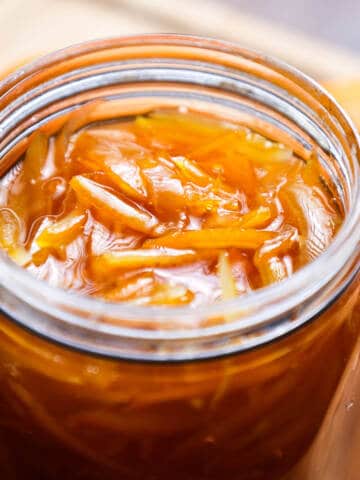
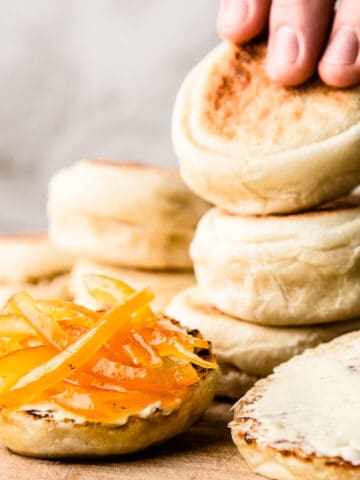
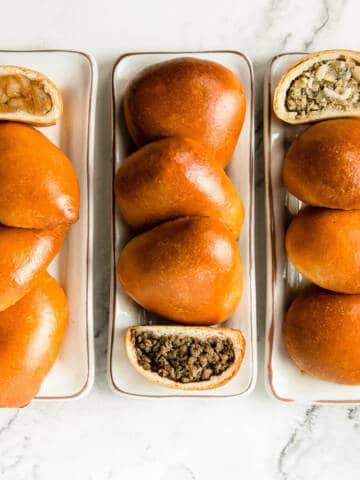
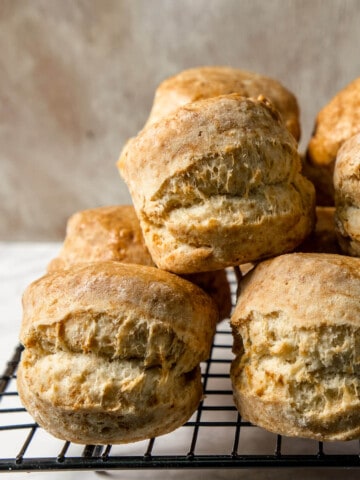
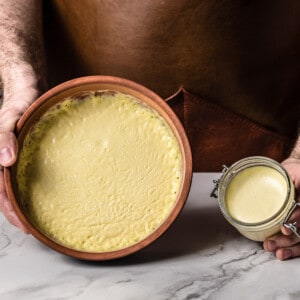
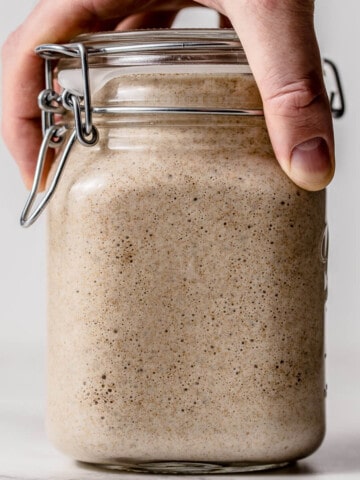
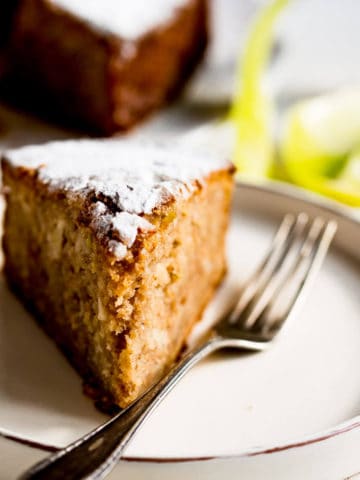
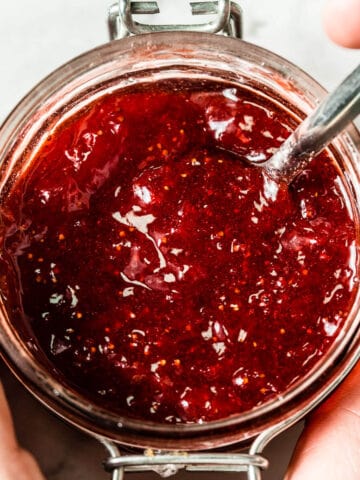
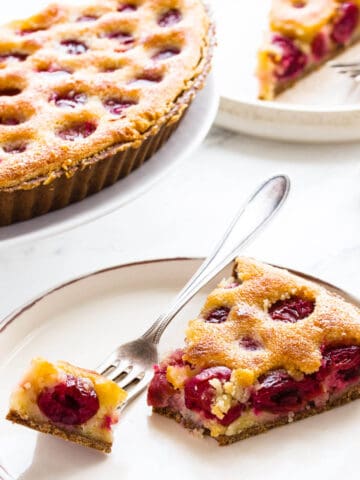
Miche Campbell
Hi,
Do you recommend salted or unsalted butter?
Charlé Visser
unsalted
Miche Campbell
Thanks! Off to the shops I go...
Shirlsaw63
As an American clotted cream lover this is genius. I just need to see how it works in smaller amounts since girl's figure can't handle too much of this LOL. Thanks for the methods - I will be trying them.
Iñaki
In your video you said you added extra fat. How much white fat did you add?
Double cream - 1 L
Butter - 50g
Fat - ??
Much appreciate it.
Thanks
Charlé Visser
It’s just the butter. That’s the extra fat.
Mary
Thank you for this method. We live in a small town and the stores only carry ultra pasteurized it UHT. I did 4 1/2 c of heavy whipping cream on the stove but it took nearly an hour to cook down. The test on the plate on freezer came out great. This is the best method I have found. Waiting 12 hours to see if it worked wasn’t an option. Bravo
Chuck
When do you add the whisky and how much?
Charlé Visser
If you want to taste a little booze at the end. If you just want some flavour, at the start. 25 ml to 500ml cream is fine.
Ellen Daly
Hi, I’m delighted to have come across your recipe and methods for making clotted cream using UHT cream! Can you please give the quantities needed to add flavorings, in particular the rum version and your favorite, the Cointreau and vanilla?
Charlé Visser
One vanilla pod is fine or just use a few drops paste. Alco I usually just add 25 grams. Also love a bit of cognac
Bobby J
This is super. Been making the microwave version for a few months now. It comes out super tasty, a bit of toasty nuttiness and slightly sweet. It is alternately the world's creamiest butter, or the butteriest cream. I tried buying an expensive little jar of clotted cream imported from England - it tasted like plastic compared to the home made UHT microwave version. Be careful not to nuke a small batch too much or it will separate. This had only happened when I was doing a very small batch. I will try the stovetop version soon. Thanks.
Julie
Hi,
i’ve tried making the stovetop clotted cream. The first time I made it, it came out perfectly. Second time though, it became grainy. I used the same recipe, same method. Do you think you could tell me what caused this?
Charlé Visser
It means you slightly lost the emulsion. The grainy bits are solidified fat that split out. You could try and heat it up again, add a touch of cream, blend with a hand blender while hot then set again.
GB
I was so happy to find this recipe!
Between the instructions in the video and the instructions on the website/printed recipe, for "stovetop" I was trying to determine how long the cream should simmer. I did see the "wrinkles" you mentioned form on the top. I also tested a bit of the cooked cream on a cold plate in the freezer, but I wasn't sure what I was supposed to see there.
After it cooked down and the some of the top of the cream was wrinkled, I poured it into a jar. After refrigerating it for about 5 hours, it was still liquid. As I type, it's been refrigerated for 8 hours and it's still quite liquid. That doesn't seem to be right.
Should I put it back into a saucepan and heat it again?
Thank you.
Charlé Visser
Simmer it a bit longer. When you test it it needs to set on the plate. Different creams will reduce differently and one person might simmer it quicker than another, so it’s not an exact science in this case. If it’s still liquid even after seeing the wrinkles and still don’t set, reduce more. If it never sets the cream does not have a high enough fat content.
GB
Thank you for your tips! I used "heavy cream", as noted in your post as the highest fat content.
Tara Miller
I have made this recipe once and it turned out great. I’m planning to make it again tomorrow. I recommend it.